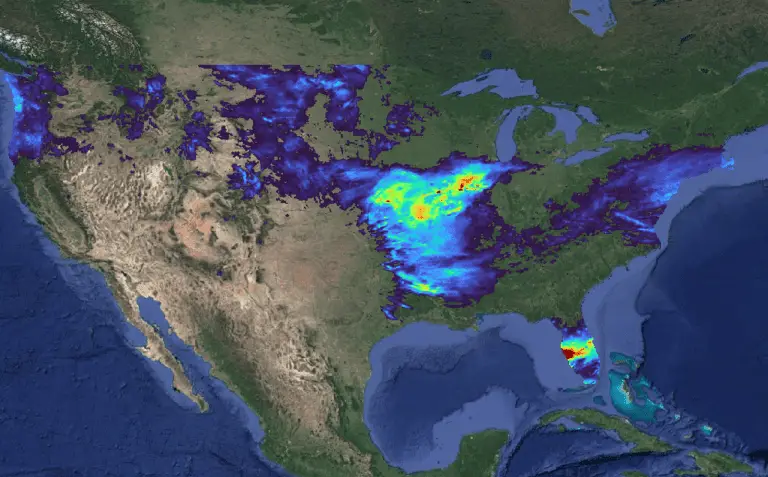PyQGIS: Query Raster Values
Objectives:
- Query the value of a raster layer at a points
Open the QGIS Python Console
From the menu, select Plugins -> Python Console, or Ctrl + Alt + P (Windows)
You can type directly into the console, or select the pad and paper icon to write code in the editor. I prefer to write code in the editor because it allows me to save my work and run a compilation of commands.
Load a raster layer
Define the path to a raster
In the code editor, or console, create a variable containing the path to your raster file.
fn = 'c:/path/to/raster/file.tif'
Load raster into QGIS interface
Now we’ll simultaneously assign the raster layer to the rlayer variable and load it into the QGIS interface.
rlayer = iface.addRasterLayer(fn, 'layer name')
This adds the raster into the QGIS interface. In the legend, the raster is labeled ‘layer name’.
Query raster value at a point
You’ll need to know the coordinates of a point that falls somewhere with the area your raster layer covers. The coordinates will need to be in the same units as the projection used to display your layer. For this example, the layer is displayed in a NAD83 UTM projection, so the units are meters. We’ll query values using two different methods.
Query value with sample()
First, we’ll use the sample() method of layer.dataProvider(). sample() takes two arguments: a point (x, y coordinates) and the raster band to query from. We’ll pass the point as a QgsPointXY and query the value from raster band 1 (my raster only has one band)
val, res = layer.dataProvider().sample(QgsPointXY(246572, 4306418), 1) print(val, res)
Output:
2975.84814453125 True
If the point occurs outside of the raster extent sample() the output would be nan False.
Query value with identify()
Second, we’ll use the identify() method of layer.dataProvider(). This is similar to using the identify pointer in the QGIS interface. identify() will return a dictionary containing the band number and value for all bands in the raster layer. We just need to specify the point to query at and the format of the result (IdentifyFormatValue).
ident = layer.dataProvider().identify(QgsPointXY(246572, 4306418), QgsRaster.IdentifyFormatValue) print(ident.isValid()) print(ident.results())
Output:
True
{1: 2975.84814453125}
If the point occurs outside of the raster extent identify() will return None.
Video tutorial
See this tutorial described in a video.



